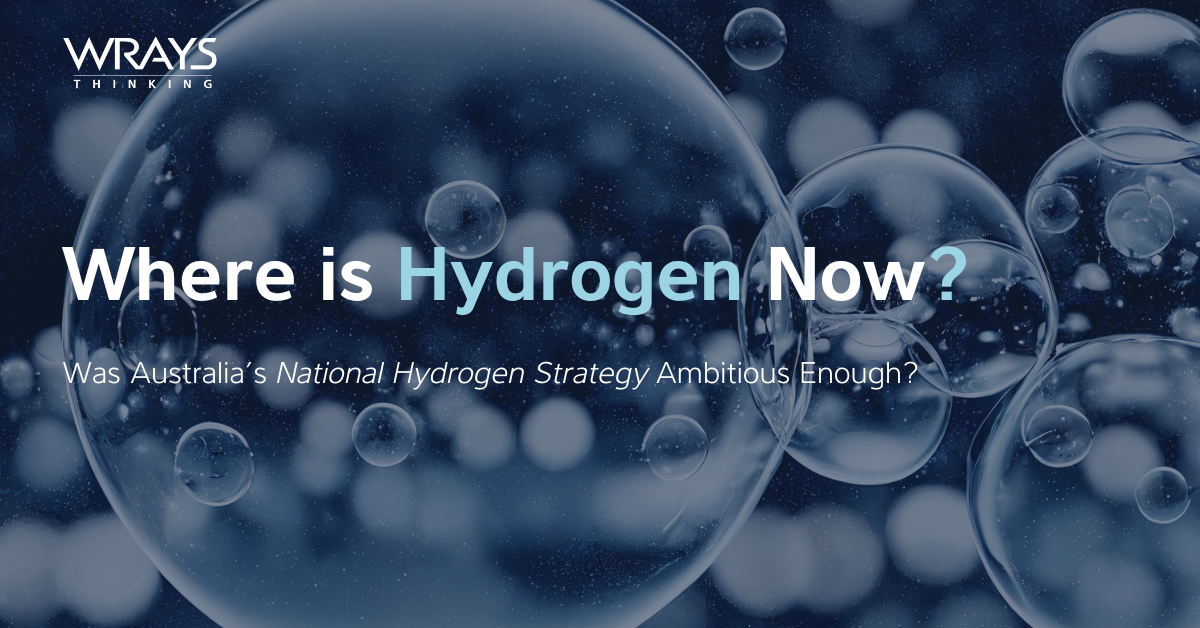Was Australia’s National Hydrogen Strategy Ambitious Enough?
What has happened in the four years since the Australian Government endorsed the first National Hydrogen Strategy (2019)? In July 2023 the Australian Government released a discussion paper seeking submissions by August 2023. A number of these submissions are now available to view online.
Perhaps the initial National Hydrogen Strategy was somewhat ambitious. It contained 57 actions and principles to underpin development of a large-scale hydrogen industry in Australia. However, by the end of 2022, only a single Australian project with a capacity of at least 10 MW had reached Final Investment Decision, i.e. the project will go ahead. This is important since hydrogen production at scale is necessary to provide Australia with substantial opportunities in the hydrogen economy.
Further, because hydrogen production is seen (at least in Australia and the United States) as needing government incentives, global competition will be driven by differentials between incentives available in different regions. In that regard, the very substantial incentives available under the US Inflation Reduction Act will act as a magnet in comparison to the incentives available in many other territories around the world.
The $2 billion incentive available under the Australian Hydrogen Headstart programme aimed at scaling up hydrogen production using renewable electricity (the design of which is currently the subject of consultations) is not insubstantial. It would be unfair to criticise it for paling in comparison to the incentives available in the US. At the time of writing, the expressions of interest phase for this program has just concluded and developments will be observed with keen interest.
To some extent, the incentive differential is a lower order issue than solving the problem of more economic hydrogen production for a wider range of applications, not just in niche applications, mainly in the transport sector. In that regard, both Australian and US discussion papers relating to development of the hydrogen economy have a focus on the costs of hydrogen production and the need to reduce it further.
The need for substantial incentive and investment should not, however, be taken to mean that there are no or limited opportunities for Australia in the hydrogen economy. There are definite opportunities including:
- replacing carbon with hydrogen in steelmaking
- replacing carbon with hydrogen in aluminium production
- sustainable aviation fuels
- hydrocarbon fuel replacement
- shipping hydrogen as ammonia
- decarbonisation of the agriculture and food sectors including through ‘precision fermentation’
- electricity grid stabilisation or ‘firming’.
Under these headings, there are various technical problems to solve, much of which will involve the creation of, or at least access to, intellectual property (IP) as recognised in the Hydrogen Headstart Guidelines issued in October 2023. An IP creation task will be significant since the economics of building a hydrogen economy in Australia will, on one estimate, require almost $2 billion per year of investment from 2040 onwards. A significant amount of this investment will involve payment for IP, most likely to overseas IP owners. Furthermore, freedom to operate reviews would be most prudent, particularly if successful Hydrogen Headstart applicants are to meet the requirements under any concluded Funding Agreement.
If the magnetic force of US incentives for the decarbonised economy is to be, in any way, resisted, programmes to support developments in the hydrogen industry and advance Australia’s economic interests in the space will likely need to be much more ambitious.
Useful Resources
Australia’s National Hydrogen Strategy (2019)
National Hydrogen Strategy Review – Consultation Paper 1 (July 2023)

